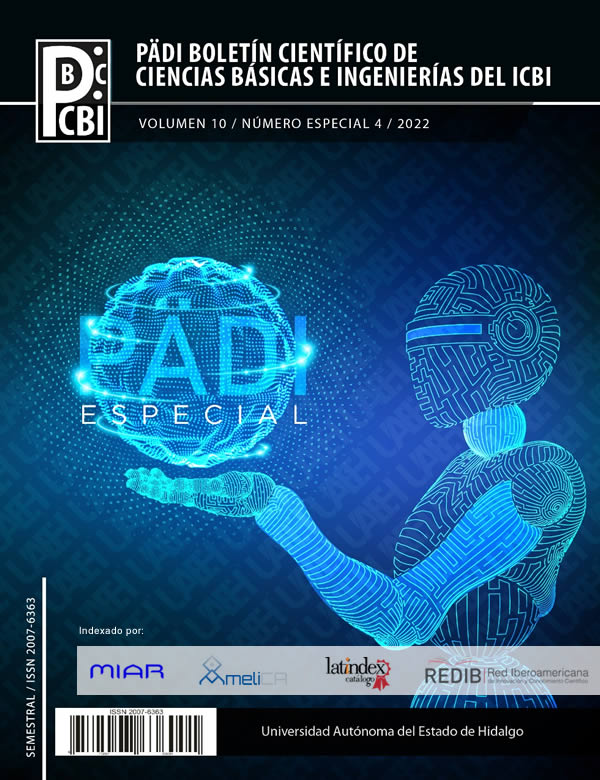Modeling and temperature control for a class of system derived from Newton's law of cooling
Abstract
In this paper the modeling and control for a class of system derived from Newton's law of cooling is presented. In this paper a thermal system is represented by a concentrated parameter model, whose substances are characterized by a resistance to heat flow having a thermal capacitance, which usually have heat loss. Therefore, it is required to implement a controller class that allows to optimize the cost function and allows to take advantage of the performance with the least energy loss. To satisfy the above, an LQR controller is used to minimize the performance criteria. The results are carried out through simulations and experiments in real time using Matlab, Arduino and the W1209 thermostat. Finally, the article presents the results that allow validating the performance of the proposed model and the implemented controller.
Downloads
References
Arduino, (2020). Software y Hardware de Ardunio UNO. Disponible en: https://www.arduino.cc
Arduino IO package Simulink. Librerías para Arduino en Matlab-Simulink. (2020). Disponible en: https://www.mathworks.com/matlabcentral/answers/34672-arduino-io-package-simulink
Benitez, I. O., Rivas, R., Feliu, V., Sanchez, L. P. & Sanchez, L. A. (2016). Fuzzy Gain Scheduled Smith Predictor for Temperature Control in an Industrial Steel Slab Reheating Furnace, IEEE Latin America Transactions, vol. 14, no. 11, pp. 4439-4447. DOI: 10.1109/TLA.2016.7795812.
Benítez González, I. O., Rivas Pérez, R., Feliu Batlle, V. & Castillo Garcia, F. J. (2015). Temperature Control Based on a Modified Smith Predictor for Injectable Drug Formulations, IEEE Latin America Transactions, vol. 13, no. 4, pp. 1041-1047. DOI: 10.1109/TLA.2015.7106355.
Boyles, Justin G., Levesque, Danielle L., Nowack, Julia; Wojciechowski, Michał S., Stawski, Clare, Fuller, Andrea, Smit, Ben &Tattersall, Glenn. (2019). Efficiency and its bounds for thermal engines at maximum power using Newton’s law of cooling, Journal Ecology & Evolution, vol. 9, no. 21, pp. 12020-12025. DOI: 10.1002/ece3.5721.
Jain, Dilip & Pathare, Pankaj. (2007). Modeling of the internal Cooling of Fish during Ice Storage," in International Journal of Food Engineering, vol. 3, no. 4, pp. 1-13, 2007, DOI: 10.2202/1556-3758.1131.
Kemper, A., Wöbbekind, M., Büskens, C., & Schollmeyer, M. (2013). LQR control for a Diesel engine’s air system, Proceedings in Applied Mathematics and Mechanics, vol. 13, no. 1, pp. 473–474.
Mondol, A., Gupta, R., Dutta, T. & Das, S. (2018). An insight into Newton’s cooling law using fractional calculus, Journal of Applied Physics, vol. 123, no. 6. DOI: 10.1063/1.4998236.
Ogata, K. (2010). Modern Control Engineering. Prentice Hall, 5th edition, Madrid, España.
Qiang, H. (2014). Modeling and Simulation of LQR Control for DC Motor, Applied Mechanics and Materials, vol.668-669, pp. 486-489. ISSN: 1660-9336, Publisher: Trans Tech Publications Country of Publication: Switzerlan.
Rezende, Enrico & Bacigalupe, L. (2015). Thermoregulation in endotherms: physiological principles and ecological consequences, Journal of Comparative Physiology B: Biochemical, Systemic & Environmental Physiology, vol. 5, no. 7, pp. 709-727. DOI: 10.1007/s00360-015-0909-5.
Salcedo, Hernández J., Rivas-Pérez, R & Sotomayor Moriano, J. J. (2018). Design of a Generalized Predictive Controller for Temperature Control in a Cement Rotary Kiln, IEEE Latin America Transactions, vol. 16, no. 4, pp. 1015-1021. DOI: 10.1109/TLA.2018.8362131.
Santos, C. F., Ancines, C. A. & Krenzinger, A. (2018). Temperature Controller for Simultaneously Test of Solar Collectors in Series, IEEE Latin America Transactions, vol. 16, no. 6, pp. 1708-1714. DOI: 10.1109/TLA.2018.8444390.
Su, J., Kochan, O., Chunzhi, Wang & Kochan, R. (2018). An insight into Newton’s colling law using fractional calculus, Measurement Science Review, vol. 15, no. 6, pp. 304-312. DOI: 10.1515/msr-2015-0041.
Teppa Garran, P., Nardone, V. & Rodríguez Diez, J. (2015). LQR Control Employing Output Derivative Measures, IEEE Latin America Transactions, vol. 13, no. 8, pp. 2538-2544. DOI. 10.1109/TLA.2015.7331909.
Termostato W1209. (2020). Manual de uso del Termostato W1209. Disponible en: https://mvelectronica.com/download-product-file/W1209/Manual%20w1209%20(2021-02-09%2017-38-36).pdf
Torres, W. L., Araujo, I. B. Q., Menezes Filho, J. B. & Costa Junior, A. G. (2017). Mathematical Modeling and PID Controller Parameter Tuning in a Didactic Thermal Plant, IEEE Latin America Transactions, vol. 15, no. 7, pp. 1250-1256. DOI: 10.1109/TLA.2017.7959343.
Viana Fonseca, J., Silva Abreu, I., Moraes Rego, P. H., Melo Wolff, M. d. P. & Silva, O. F. (2008). A Genetic Algorithm Convergence and Models for Eigenstructure Assignment via Linear Quadratic Regulator (LQR), IEEE Latin America Transactions, vol. 6, no. 1, pp. 1-9. DOI. 10.1109/TLA.2008.4461626.
Villar, J. R., De la Cal, E. & Sedano, J. (2008). Energy Saving by Means of Multiagent Systems and Fuzzy Systems, IEEE Latin America Transactions, vol. 6, no. 6, pp. 517-523. DOI: 10.1109/TLA.2008.4908184.
Yan, H. & Guo, H. (2012). Efficiency and its bounds for thermal engines at maximum power using Newton’s law of cooling, Physical Review. E, Statistical, Nonlinear, and Soft Matter Physics, vol. 123, no. 6.













